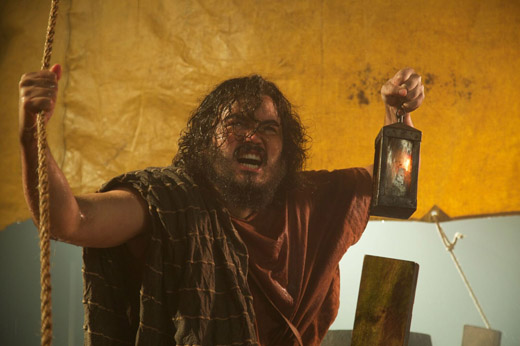
By Donald H. Harrison

 SAN DIEGO – In an irony of modern history, the marauding, barbaric, and pillaging destroyers of culture who came to be known collectively as ISIS inadvertently may have shed light on the story behind a shrine to the biblical Jonah as well as upon an ancient king of Assyria. Such is the thrust of an episode of the “Secrets” series that airs at 8 p.m., Sept. 24, on the Smithsonian cable channel.
SAN DIEGO – In an irony of modern history, the marauding, barbaric, and pillaging destroyers of culture who came to be known collectively as ISIS inadvertently may have shed light on the story behind a shrine to the biblical Jonah as well as upon an ancient king of Assyria. Such is the thrust of an episode of the “Secrets” series that airs at 8 p.m., Sept. 24, on the Smithsonian cable channel.
On July 24, 2014, ISIS, which then occupied Mosul, Iraq, blew up Nebi Yunis, the shrine to Jonah that was believed to be at least 1,600 years old. Besides being a site holy to Muslims, the shrine also was venerated by Jews and Christians as it was believed that the Jonah of the Bible had been buried there.
Mosul is the modern name for Nineveh, the biblical city to which God had sent Jonah to warn of destruction unless its citizens repented of their evil ways. Jonah, reluctant to carry out the mission, took a ship in the opposite direction, according to the tale. However, God caused a terrible storm to descend on Jonah and his shipmates. To save the others, Jonah leapt overboard. He was swallowed, according to the story, by a great fish, in the belly of which he survived for three days and three nights before being vomited ashore. Chastened, Jonah carried out his mission to Nineveh, warning the king of the consequences if he did not repent. The king heard the message, and repented along with his people.
After ISIS destroyed the shrine, its followers dug numerous tunnels at the site for the purpose of looting any treasures the explosion had uncovered there. Even so, many artifacts too large to carry away subsequently were uncovered after ISIS was routed from the area by superior military force. The story the artifacts told indicated that on this same site stood the palace of the Assyrian king Esarhaddon, who in league with his mother, had murdered his father to ascend the throne. Inscriptions celebrated his ruthlessness toward his enemies, while other artifacts bespoke his devotion to the goddess of battle and fertility, Ishtar, whose followers were sexual libertines.
Perhaps, suggested archaeologists interviewed for this documentary, Esarhaddon was the evil king who repented after hearing Jonah’s prophecy. Further evidence of this was a place where upside down statues of four women were found – purposefully sculpted that way to indicate that these women, among them Esarhaddon’s mother, were fated to go to hell.
Documentarians interviewed scholars who said that indeed some of these clues fit the story of Jonah. However, they said, there was no scientific reason to believe the most famous part of Jonah’s story – that of remaining alive inside the belly of a giant fish. Furthermore, there was another flaw. Esarhaddon’s reign came approximately 100 years after the time that the Bible alludes to Jonah in 2 Kings.
This prompted scholars to suggest that perhaps another sage had been buried there long after the time of Esarhaddon, perhaps someone who had been venerated by the Christians who had lived in the area around the year 500, more than two centuries before the Islamic religion had spread to Iraq. Perhaps the site already was a popular pilgrimage location when the Muslims arrived. In as much as Nineveh already was associated with Jonah, perhaps the religious authorities of the time converted the shrine from one revering a Christian holy man to one revering Jonah.
Perhaps. Perhaps. Judge for yourself at 8 p.m., September 24.
*
Harrison is editor of San Diego Jewish World. He may be contacted via donald.harrison@sdjewishworld.com